Today, it’s easy to think of Italy as one cohesive country, unified by its love of pasta, soccer, and very short coffee drinks – but it hasn’t always been that way. In fact, the Republic of Italy (colloquially referred to as “Italy”) is only 77 years old. Before that, Italy was the Kingdom of Italy. And prior to the Kingdom of Italy, formed in 1861, the region was a large collection of countries, kingdoms, and city-states.
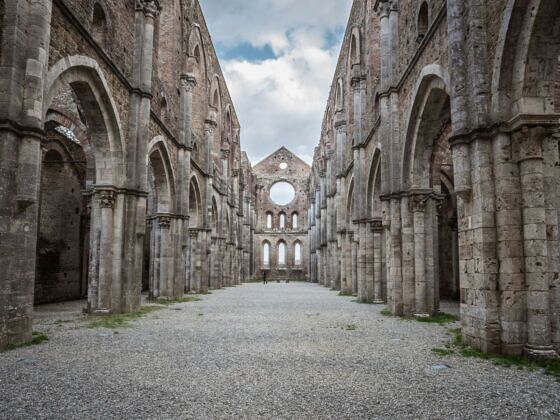

7 Unique Churches in Italy That Defy All Expectations
Since it wasn’t a unified country, there hasn’t been one dominant architectural style for most of Italy’s history, except, perhaps, for “Romanesque.” It’s a semi-broad term applied to buildings with archways and barrel-vaulted ceilings, which eventually became popular across most of Italy. But throughout the centuries, various invaders and conquerors brought their styles with them, leaving Italy with plenty of outlier churches, like the Pisan-styled (as in, architecture from the city of Pisa) Basilica of the Holy Trinity in Sardinia.
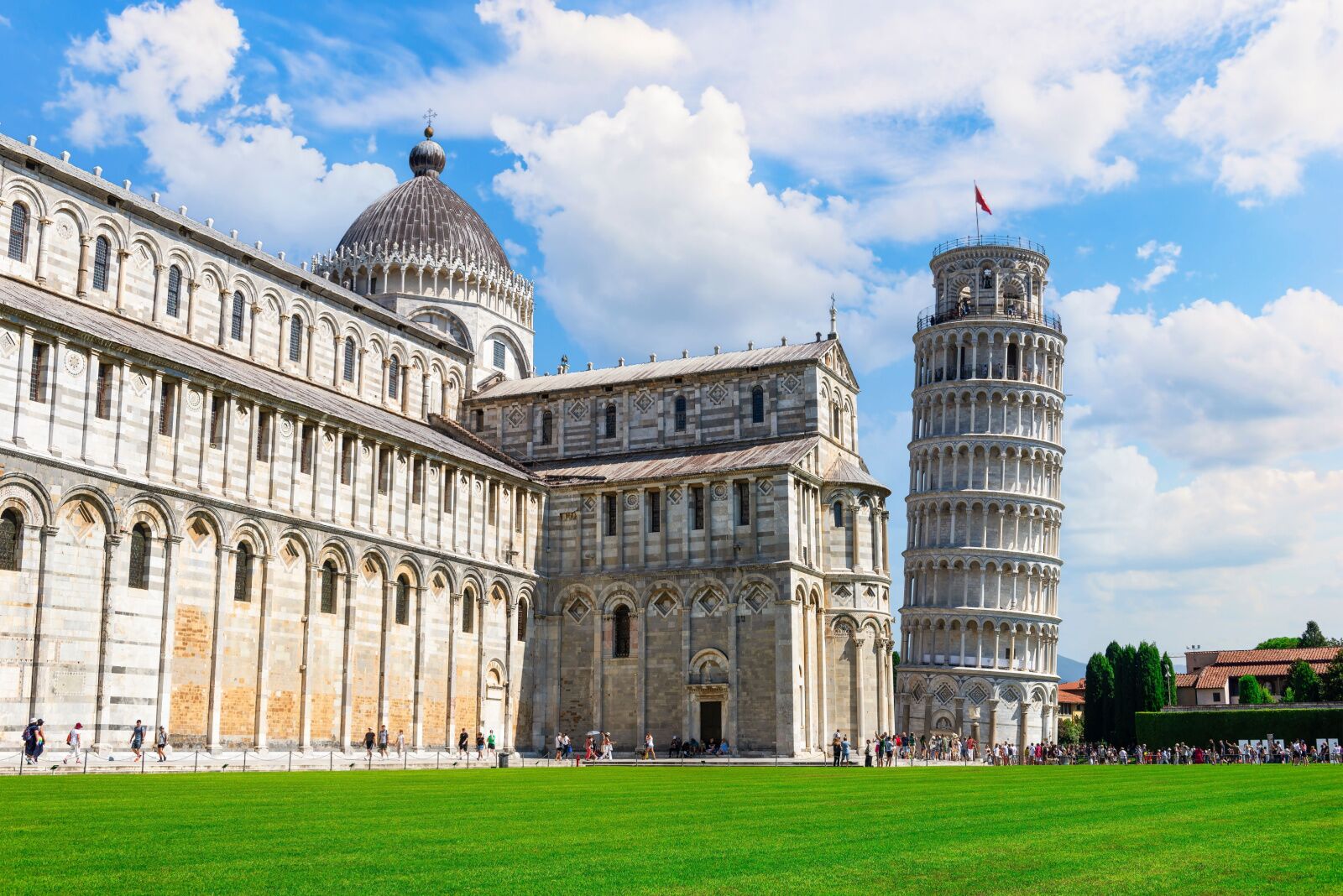
Some of Italy’s most famous buildings are considered Romanesque. Photo: zevana/Shutterstock
Perhaps the only theme that has remained consistent throughout history is the way the inhabitants of the Italian peninsula have reused structures and materials whenever they can. So it’s not surprising to see medieval churches in Italy built with pre-Christian columns and tiles looted from temples built during the Magna Grecia (the 8th-century period of Greek settlement in southern Italy).
The churches in Italy below each have some defining factor that makes them unique and well-worth a visit, but they’re far from the only strange, unexpected, or interesting churches in Italy. Sometimes, all it takes is an afternoon of wandering around Rome to stumble on a hidden wonder, tucked away in one of the city’s many tight side-streets.
Where to find the most unusual churches in Italy
It’d be hard to fit all of these churches into one trip, though you could do it with enough vacation time. But considering how much there is to see around each church, and the fact that Rome alone could fill an entire vacation, you’ll probably want to add these visits on to trips you already have planned to the regions, instead of cramming them all into one extremely long vacation.
The Cave of the Archangel Saint Michael: Sant’Angelo a Fasanella, Campania

Photo: Francesco Bonino/Shutterstock
Deep in the Alburni mountains in the southern region of Campania is the Cave of Archangel Saint Michael. It’s a Benedictine church dating to the 11th century and built inside a large natural cave. While its roots before being repurposed as a church have been lost to time, archeological evidence suggests that the cave was used at various points throughout human habitation in the Alburni mountains, most likely starting as a temporary shelter before later being used by Greek settlers.
While modifications such as a brick floor and a new altar have been made over the centuries, the cave is still predominantly untouched and still displays natural stalactites.
This UNESCO World Heritage site is open to the public year-round and only reachable by car. It still functions as a church, holding Mass every week.
Sanctuary of Saint Mary of the Island: Tropea, Calabria
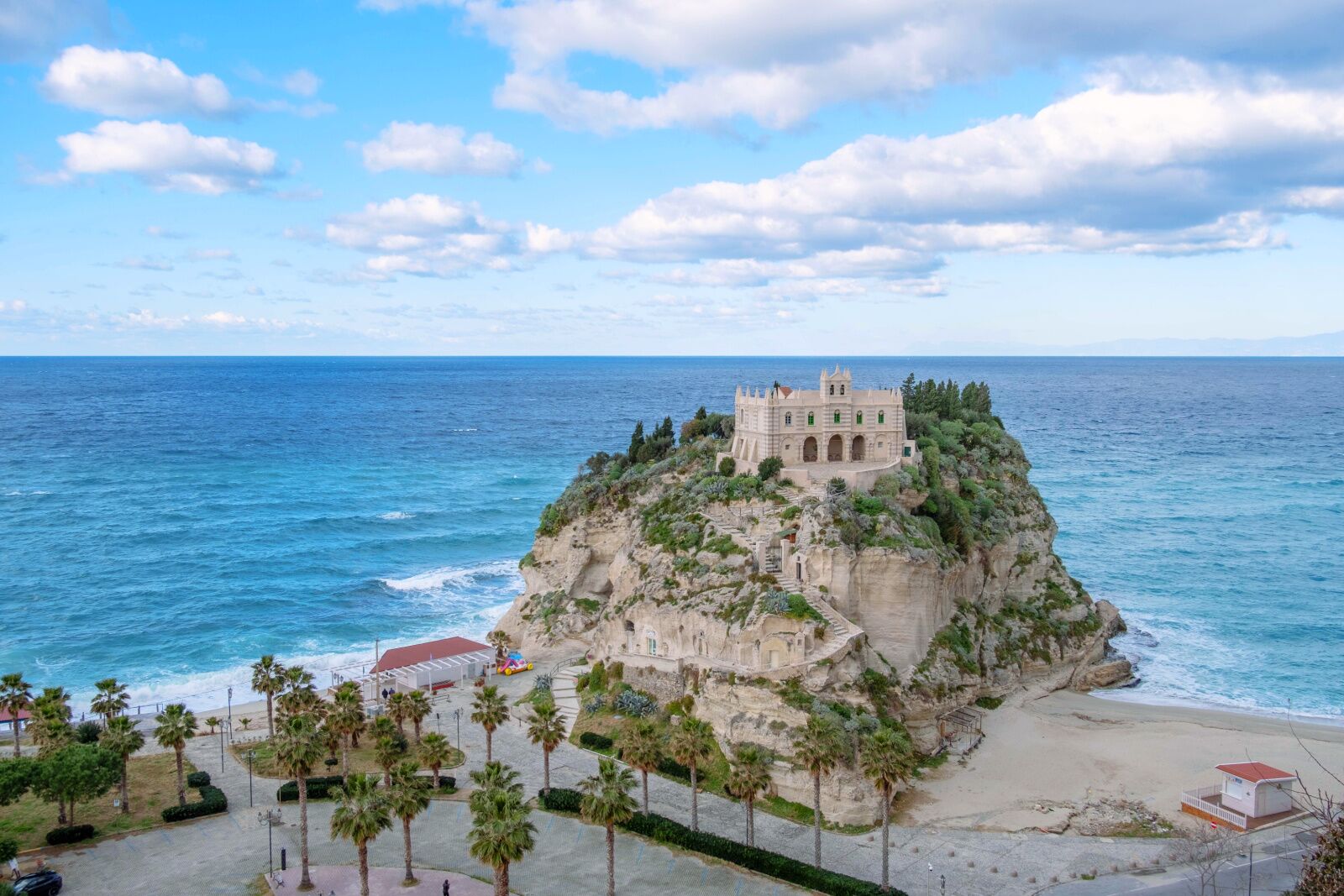
Photo: bmszealand/Shutterstock
Tropea is famous throughout Italy for a treasured red onion that only grows there: the Tropean onion. However, perched on a small, rocky promontory along the clear-blue water sits another treasure: the Sanctuary of Saint Mary of the Island.
First founded by monks of Saint Basil and later passed to the Benedictine order under the Norman duke Robert Guiscard, this ancient church retains little of its original structure. Over the centuries, earthquakes destroyed the first iterations of the church. Now, only a few of the original walls remain, visible from inside the church.
A staircase along a sheer cliff face connects the Sanctuary of Saint Mary to the parking lot and beach below.
If you’re planning a visit to this beach town in August, consider timing it with the annual festival of Saint Mary of the Island, held annually mid-August.
Basilica of San Clemente: Rome, Lazio
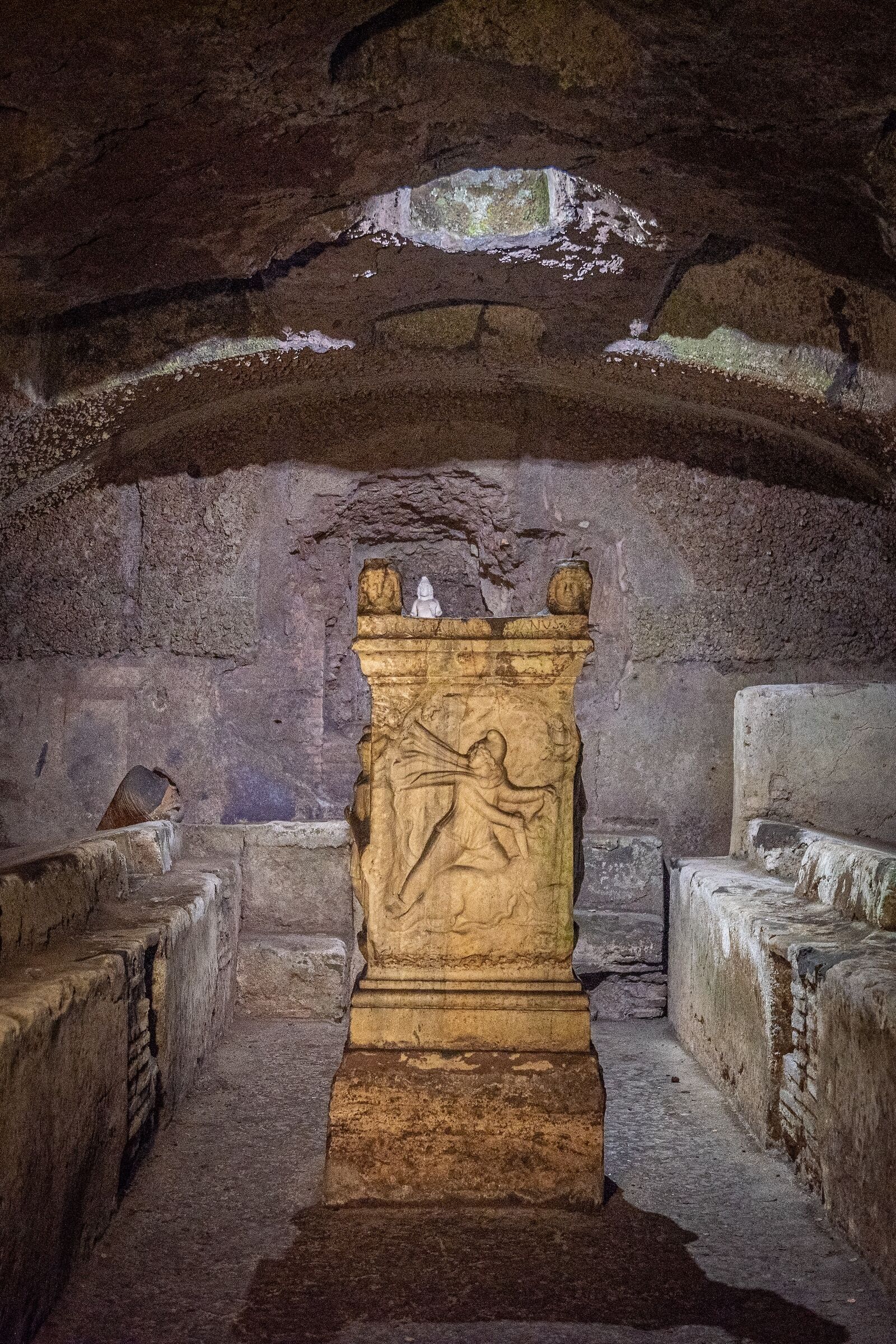
Photo: Beppe Castro</>/Shutterstock
In a city as old as Rome, it’s difficult, if not downright impossible, to avoid building on older structures. And there might not be a better visual representation of this than Rome’s Basilica di San Clemente, one of a few churches in Italy that offers a journey into the past while descending the stairs into the basement levels.
Many historians characterize the Basilica of San Clemente as having three “layers” of Roman history, though evidence remains that there are even older buildings below those.
It started as the home of Titus Flavius Clemens, one of the first Roman senators to convert to Christianity, and was probably used as a secret place of worship for other Christians. Almost a hundred years later, the mansion was converted to a temple dedicated to Mithras, a Roman god and figurehead of a then-contemporary religion at odds with Christianity.
In 313 CE, Pope Siricus commissioned a basilica to be built on the site of the temple to Mithras. The original basilica was destroyed and abandoned during the Norman sacking of Rome about 700 years later. Soon after, Pope Paschal II commissioned and erected a new basilica on the same site in 1108, which is the Basilica of San Clemente that stands there today.
For 10 euros (roughly $11), you can delve into the depths of the church to explore the ruins of the Roman mansion, temple to Mithras, and 10th-century basilica.
The Basilica of Saint Sabina: Rome, Lazio
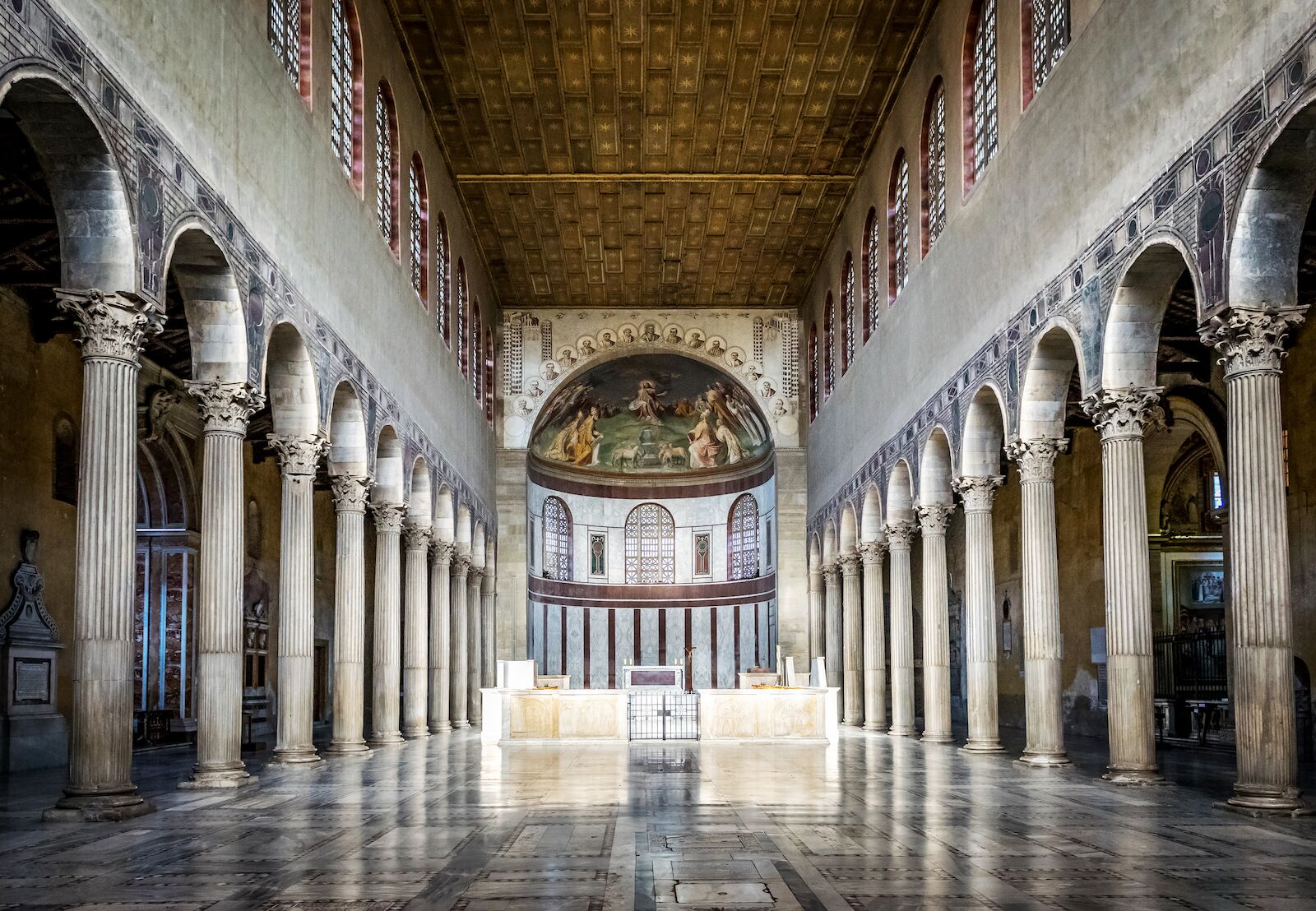
Photo: nomadFra/Shutterstock
Rome is often referred to as the “City of Churches,” so it’s no surprise that more than a few of the most unique churches in Italy sit within its borders.
The Basilica of Saint Sabina is on Aventine Hill, one of Rome’s seven famous hills perhaps most well-known as the location of the “Aventine Keyhole” (a view of Saint Peter’s Basilica through the keyhole of the residence belonging to the Priory of the Knights of Malta).
Built in 432 CE on the tomb of Saint Sabina, the church was constructed near a previous Temple of Juno, reusing 24 of the columns from that temple in the Basilica of Saint Sabina. While the interior can feel like a bit of a letdown after the opulence of Saint Peter’s Basilica, that’s by design. The Basilica of Saint Sabina is one of the best preserved, albeit heavily restored, examples of early Christian churches, and isn’t meant to be as glitzy as Saint Peter’s, built in the 16th and 17th centuries.
If after walking around, you find yourself tired and unwilling to make the trek back down the hill just yet, you can relax in the adjoining Garden of the Orange Trees and enjoy the view over the city.
Basilica of the Holy Trinity of Saccargia: Codrongianos, Sardinia
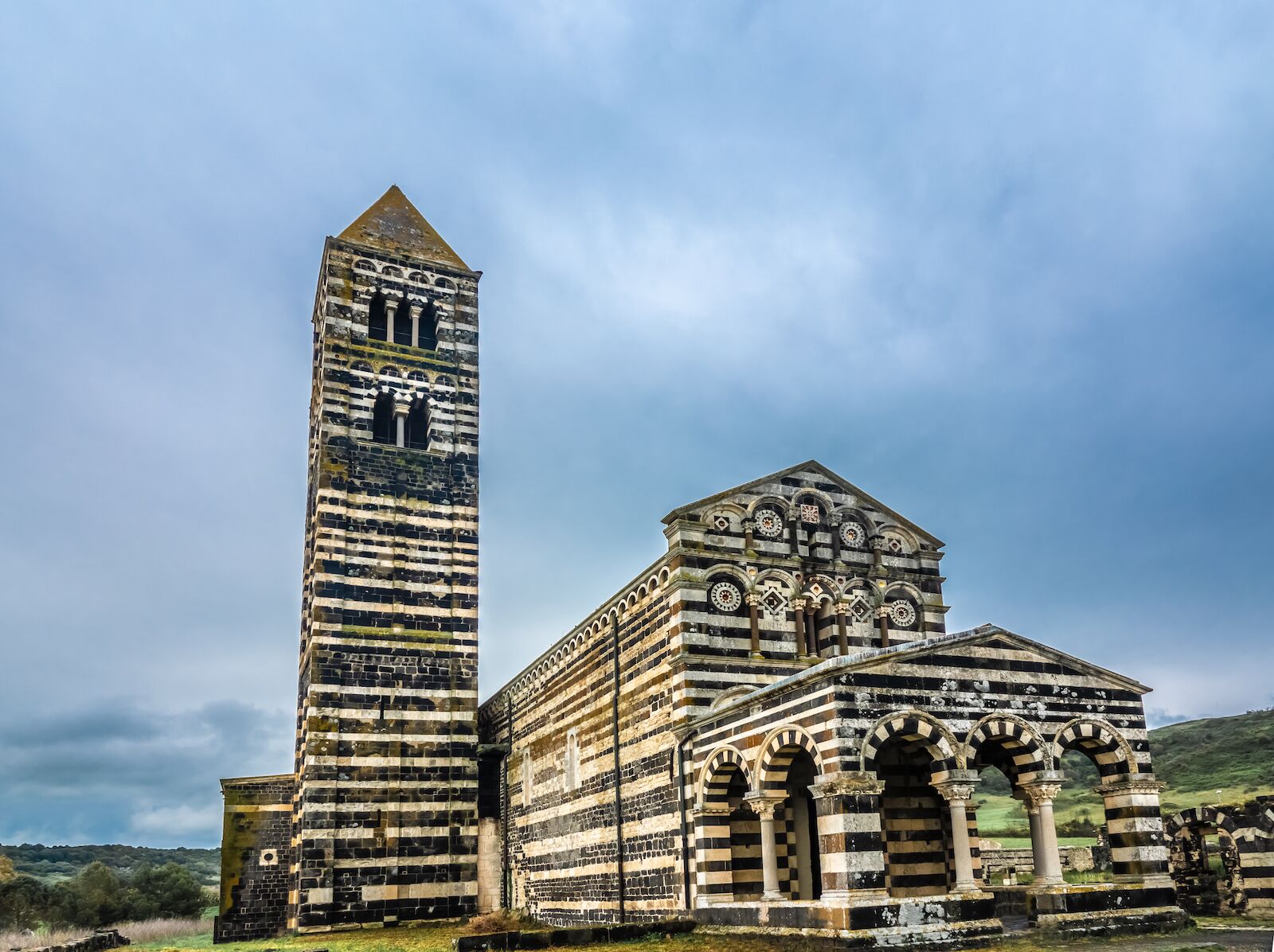
Photo: LouieLea/Shutterstock
The island of Sardinia, Italy’s second-largest, is often overlooked as a footnote in history, usually placed in the same sentence as “exiled to.” But before the unification of Italy, Sardinia was one of Italy’s largest territories.
A visit to the Basilica of the Holy Trinity offers views of the isolated and beautiful landscape that characterizes this part of Sardinia. Like many of the churches in Italy on this list, the site of the Church of the Holy Trinity was sacred long before the black-and-white building was erected on the ruins of a previous monastery, likely in the 12th century.
Characterized by its blend of Tuscan and Pisan Romanesque architectural styles, the basilica’s sweeping arches, sturdy pillars, and stripes of black and white look like they’d be more at home across the sea in Tuscany than in Sardinia.
Basilica of Saint Francis: Ravenna, Emilia-Romagna
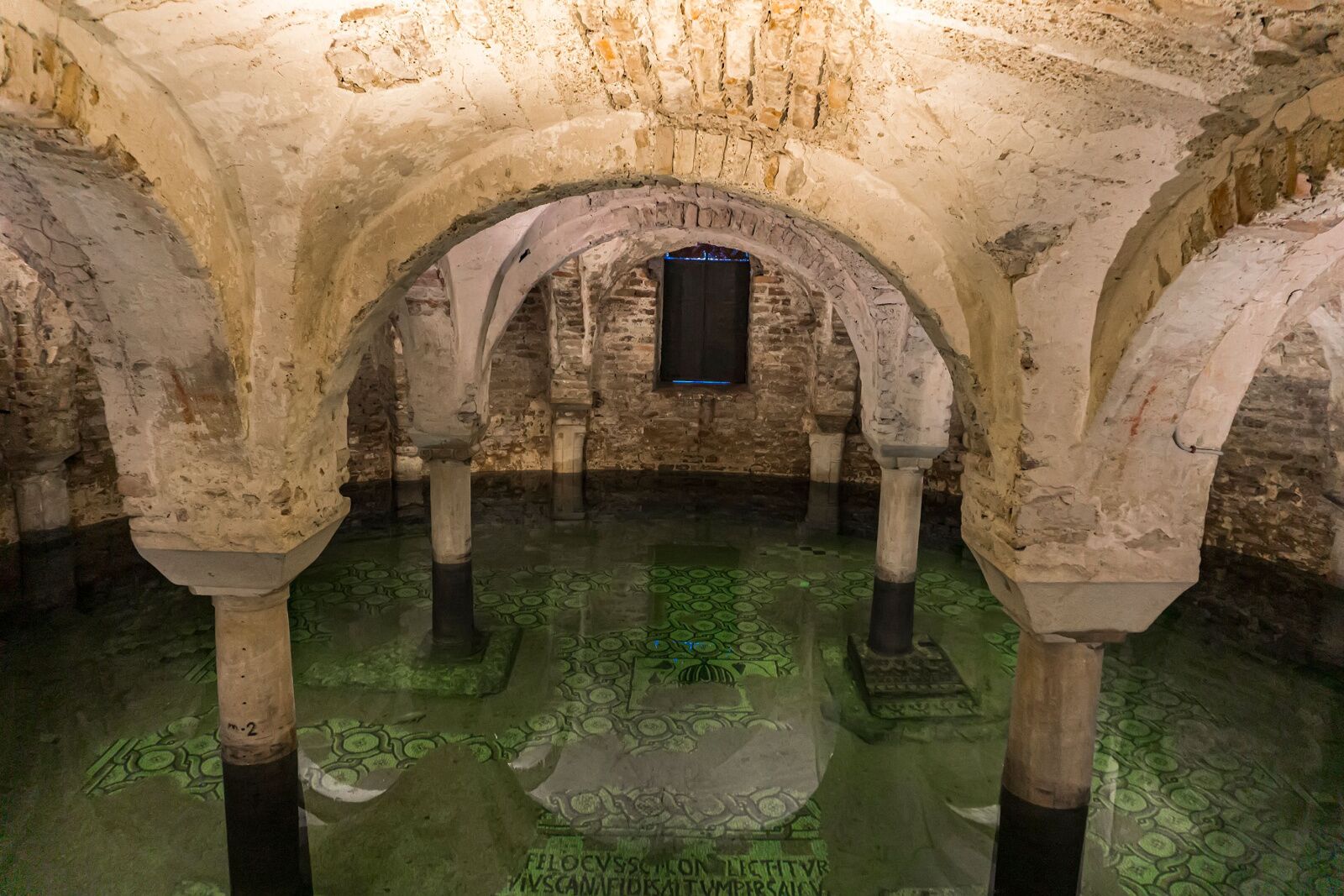
Photo: BGStock72/Shutterstock
For any fans of classical literature, a trip to the Basilica of Saint Francis in Ravenna is a must to pay your respects to Dante Alighieri, buried in the basilica. It was built around 450 CE on the site of an even older church before being demolished and rebuilt between the 9th and 10th centuries CE to expand its size and add a bell tower, at which point it was granted to the Franciscan order.
However, being the resting place of the Supreme Poet isn’t the only thing unique about this church. Ravenna is built on marshland, and the basilica is, too. While the church above is decorated with 14th-century frescoes, the crypt below has flooded several times, and is now home to a goldfish pond and the few errant ducks who have found their way in.
Abbey of Saint Galgano: Tuscany

Photo: Rebius/Shutterstock
As the legend goes, on Christmas Day in 1180, the ruthless knight Galgano Guidotti found himself on a small hill between Chiusdino and Monticiano in the province of Siena. In an attempt to leave his warring ways behind him, Galgano drove his sword into the ground at the top of the hill to transform his sword into a cross of peace. Apparently, he drove the sword into a stone, in a reversal of the classic Arthurian tale.
On that site, around 1220 CE, construction began on a church. Allied with the powerful Republic of Siena, the abbey enjoyed a hundred years of prosperity before an English mercenary raided and looted it, marking the unfortunate beginning of its slow decline. The abbey continued to serve as a hermitage site for anyone willing to make the journey, but the roof collapsed in the 18th century, and without the money to pay for it, the church was deconsecrated, eventually used as a stable.
Today, the church stands hauntingly roofless and windowless in a field in the Tuscan countryside. And for anyone wanting to validate the story of the sword in the stone need only to visit the Rotunda Chapel. It was restored to its original condition in 1924, and currently houses the sword in the stone. Unfortunately, the sword is behind a plastic wall, and unable to be removed by the next ruler of England.